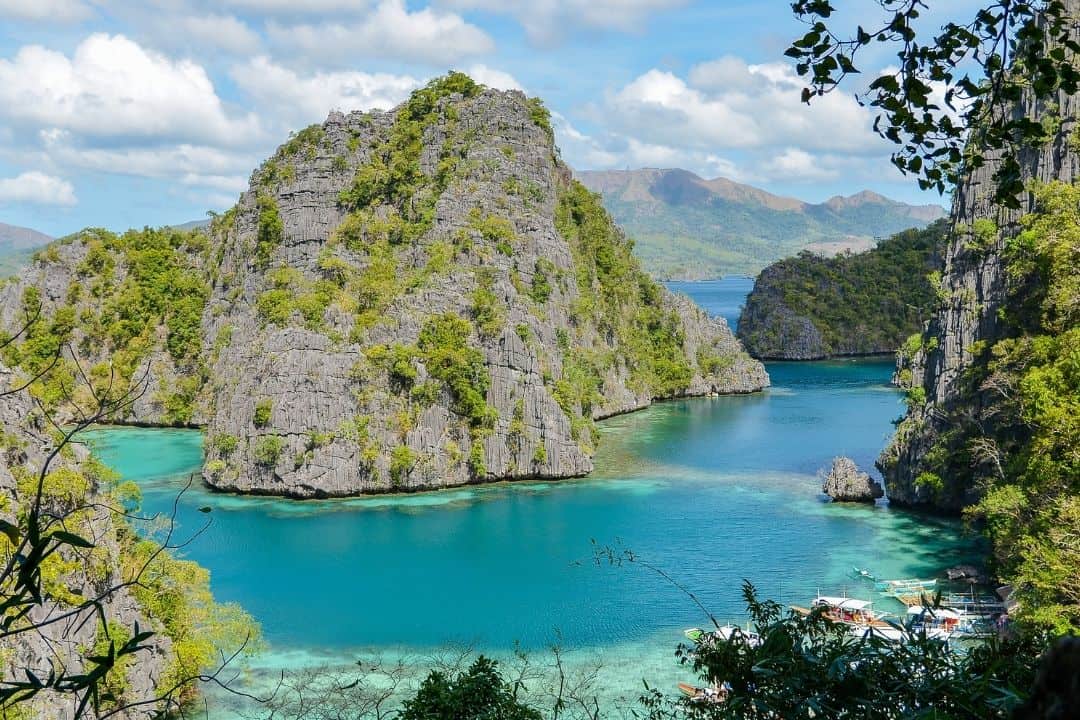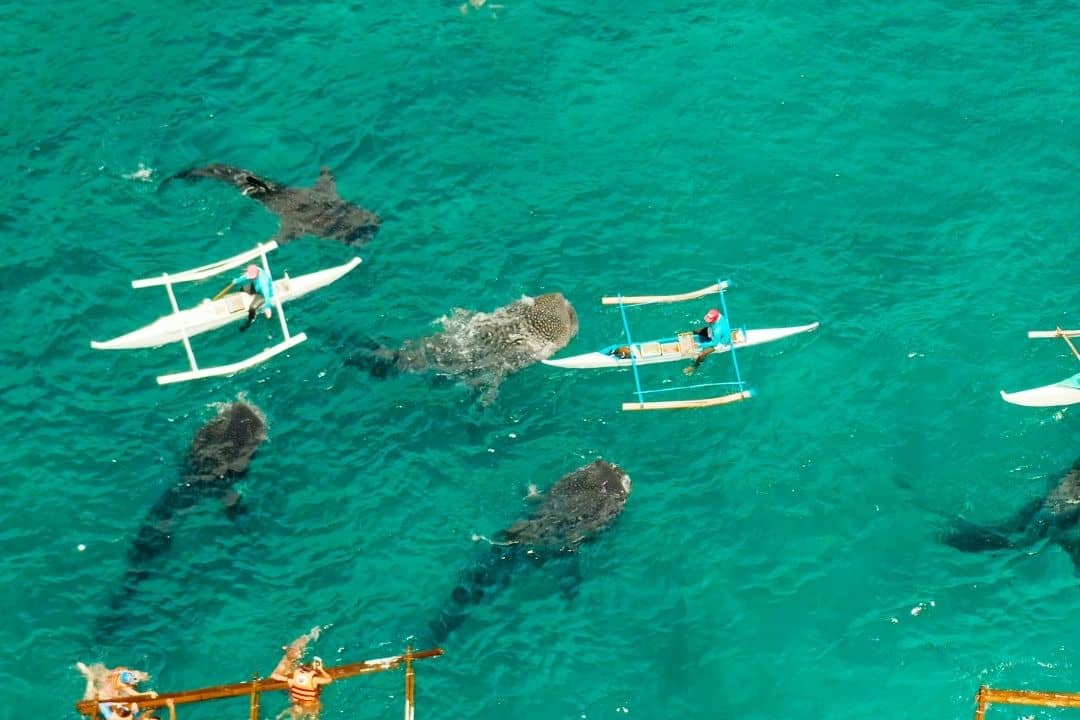The Philippines is an archipelago nation with 7107 islands and over 22,400 miles (ca. 36,049 km) of coastline.
A warm tropical paradise sitting in the heart of the Coral Triangle, the “Center of Global Marine Biodiversity”.
Warm water, great reefs, perfect visibility, a wide variety of dive sites and unmatched marine life, what else do you want?
A number of years ago, The Philippine government created a national plan to develop tourism in areas of the country that historical was not known as a tourist destination. Scuba diving was one element of this plan.
The Philippine Commission on Sport Scuba Diving (PCSSD) was transferred to the Department of Tourism with the mandate to regulate, grow and promote scuba diving.
The Philippine archipelago is divided into three Island groups: Luzon, the Visayas, and Mindanao.
These regions have a total of 25 destinations. We will discuss the top 16 dive destinations in the Philippines and give a summary of others.
Some of these destinations, such as Cebu, could be considered multiple destinations. My breakdown of destinations will be a little different from the official list.
Along with the top 16 best dive sites in the philippines, I will summarize the others and give a brief travel orientation.
Luzon Region
Luzon is the largest island of the Philippines and the northernmost major island. The Luzon Island group also includes other significant destinations.
Scuba diving in the region is diverse.
You will find two of the best wreck diving destinations in Asia here, Subic Bay and Coron, Palawan.
Diving in Anilao is noted for its diversity as well as drift dives and muck diving.
Diving around the Verde Island passage exposes you to more species of sandy muck dive sites marine life you have ever seen.
Apo Reef natural park, the second-largest contiguous coral reef system in the world, gives you perfect remote diving in the philippines. There is much more.
Anilao

Anilao, located in the Province of Batangas, is often cited as being the most popular dive destination in the Philippines.
It may be more accurate to say it is the most frequent. It is the closest dive destination from Manila about a two-hour drive from the edge of the city. This allows divers who live in Manila to do a day trip or have a dive weekend.
Diving here is inexpensive and most accommodations are simple. Anilao is on the west coast of the Mabani peninsula facing Balayan Bay.
There are over 50 dive sites, some being gentle reef dives, others challenging drift dives. A high percentage of Filipino divers learn to dive here.
Anilao has a reputation of being the “Muck Capital of the Philippines” and the “Nudibranch Capital of the World”.
As many as 600 species of nudibranches are found here as well as hundreds of other small creatures including rare seahorses. Cathedral Rock/ Cross is a dive site with an interesting background.
During a visit to the Philippines, the Pope blessed a large concrete cross that was then placed in a rocky area underwater.
The individual who placed the cross was Chief of Staff of the Philippine Armed Forces General Ramos. The site has been transformed into an vibrate coral reef and the general later became the 12th President of the Philippines.
Verde Island, Batangas
While still in Batangas Province, Verde Island is a distance away from Anilao. Verde Island sits in the middle of the Verde Island Passage.
The passage runs between Luzon Island to the north and Mindoro Island to the south. Lubang Island marks the western edge and, Marinduque and Romblon Islands mark the eastern edge.
The Verde Island Passage is often called the center of the “Center of Global Marine Biodiversity”.
The current through the passage provide a rich source of nutrients to the coral reefs and marine life of the area.
The result is one of the highest level of biodiversity in the world. In fact, it seems like every time there is a marine biology study in the passage a few new species unique to the area are discovered.
The pristine coral reefs around the island have an amazing variety of diving environments and marine life.
Moving away from the island brings you to a world of pelagic species, large reef sharks and outstanding drifts.
Diving in the passage can be a challenge, however, there are many protected dive sites around the island.
Both beginner and advanced divers will find conditions perfect for them. The island itself is lightly developed.
Puerto Galera, Mindoro Oriental
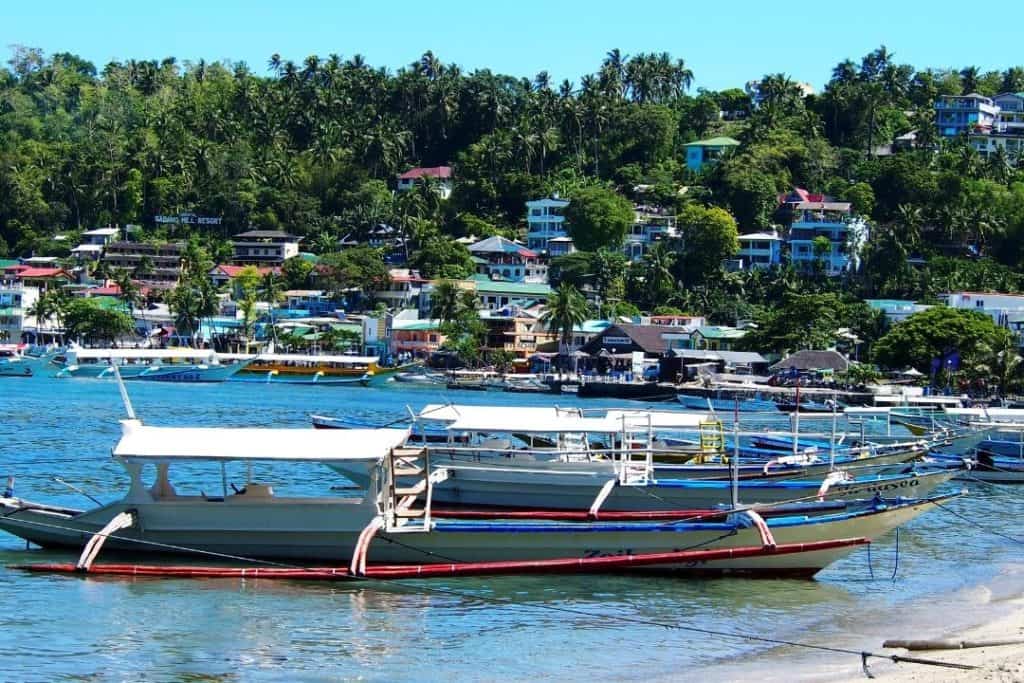
Puerto Galera was the first dive destination in the Philippines to earn an outstanding international reputation.
Designated a Man and Biosphere Reserve of UNESCO in 1973, Puerto Galera, which means Port of Galleons, dates back to the time of the Spanish Galleons.
Galleons would anchor in the protected bays, to assemble and wait for the right conditions to continue their outward journey.
Today, Puerto Galera, mindonoro’s northern tip, is know for its outstanding diving, clear waters, white sand beaches, bars and a laid back atmosphere.
It is a popular destination not only for international divers but also for Filipino beach lovers. The destination is reached by ferry from Batangas port.
There are over 40 dive sites in and around Puerto Galera most within a 10-minute boat ride from a dive shop. Most of the dive sites are in the protected bays and feature outstanding reefs.
Away from the protected bays is additional diving. The north shore of Puerto Galera is the Verde Island Passage.
There are a number of reef dive sites along the shore as well as drift dives and a few wall dives.
The area is the home of over 300 species of soft corals and hard corals, and you can find over 60% of all the species of near shore fish.
The area makes for spectacular night dive opportunities as well.
The El Galleon Beach Resort is one of the longest established resorts in Puerto Galera.
Subic Bay, Zambales
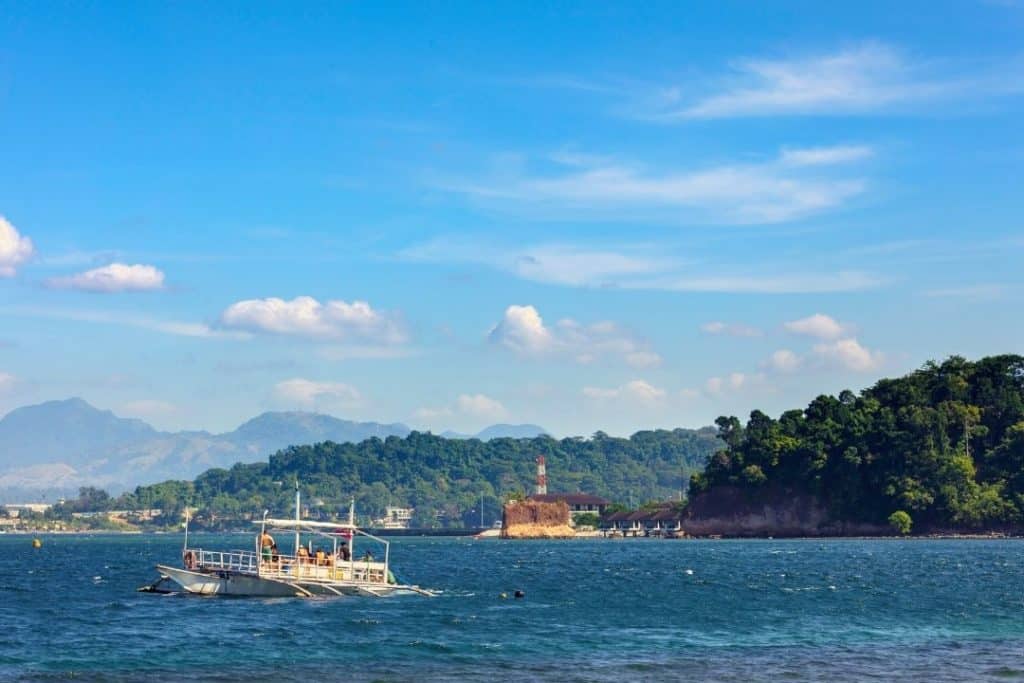
Subic Bay was once the home of the United States Navy’s largest installation outside the United States.
The Subic Bay Freeport Zone (SBFZ) now occupies the area that was once the navy base. SBFZ has a light industry base as well as a strong tourism infrastructure.
The City of Olongapo and the town of Subic are on the shores of the bay. Diving in the Philippines is well known for bountiful reefs and great diving conditions.
Not so in Subic Bay. Before the eruption of nearby Mount Pinatubo, 30 years ago, Subic Bay did have those conditions.
The eruption put meters of ash over everything in the area.
Ashfall in the bay and later runoff from the land buried and killed most of the reefs. Ash content lead to the end of the crystal clear waters.
It was also one factor leading to the closure of the base. The bay has had some recovery with some coral reefs be restored, however, the waters often has poor visibility.
Other than near the narrow entrance of the bay from the Philippine Sea, there is very little current in the bay.
What Subic Bay does have is wrecks. There are about 15 primary wrecks most from WWII with a few older ones.
These are the wrecks that the local dive shops frequently visit. Deep divers will have access to a few more wreck dives, including a few Japanese and American aircraft.
There are also another half dozen or so wreck dive sites that are not often visited.
The Armored Cruiser USS New York/ USS Rochester (ARC-2) is the most dived wreck in the bay. The 380 foot (ca. 116 m) long ship saw service in the Spanish-American war, and serviced in many conflicts and humanitarian actions until being stricken from the Navy logs in 1938.
The outbreak of WWII and the pending lost of the Subic Navy base saw the ship scuttled. Today she sits on her side in 50 feet (ca. 15 m) to 85 feet (ca. 26 m) of water.
The uppermost surface is available to explore for Open Water Divers. Advance divers can go deeper to explore the massive guns.
Wreck divers have some area they can visit.
Other wrecks include a former Japanese luxury ship turned hell ship, a WWII Japanese oiler, a upright Landing Ship Tank, and a former Cunard line ship that became a Spanish armed merchant ship.
Subic Bay is also one of the few places that cater to technical diving. Technical divers have several dive shops that support technical diving.
There are also a number of dive sites only available to technical diving. In total, there are well over 40 dive sites and counting.
Johan’s Dive resort is the longest established dive operation and has frequently found new wrecks including a pair of half-tracks.
The Wild Orchid Beach Resort is a comfortable place to stay and very close to a few dive centers.
Coron Palawan

On the 24th of September 1944, aircraft from US carriers attacked and sunk 24 Japanese ships around the island of Coron.
Today 14 of those ships formed the backbone of the Coron bay diving experience.
Most of these ships are larger freighter and have been sunk in waters suitable for recreational divers.
Most of them have areas where certified wreck divers may enter. Coron dive sites cover a wide area and some may be more than a hour boat ride from your dive center.
Another “must” experience dive in the area is Barracuda Lake dive trip.
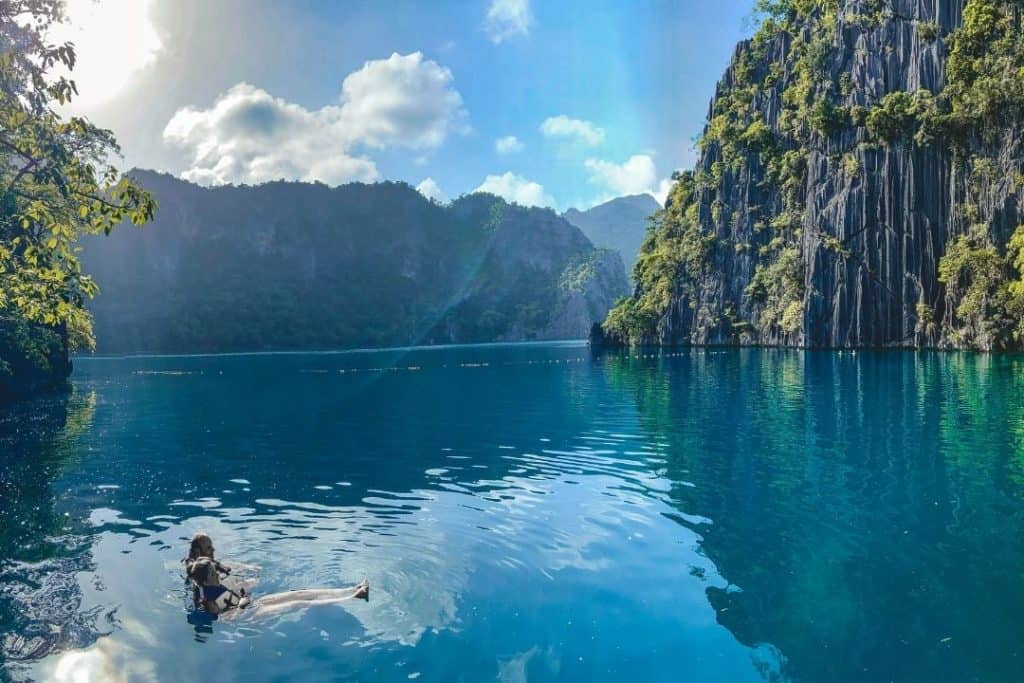
The lake is in a crater of an old volcano surrounded by limestone cliffs and requires a 20-minute hike to get to with your gear.
The lake is about 130 feet (ca. 40 m) deep with a cave around 100 feet (ca. 30 m) down.
This is a nice freshwater dive with an average temperature around 82°f (28° C).
That is until you reach about 40 feet (ca. 12 m), where you hit a halocline and thermocline. At this point, you will cross over to salt water.
Generally when you pass into a thermocline the temperature has a considerable drop, not here. The temperature rises to a hot 100° f (39° C).
The island of Coron in Palawan is a bit remote but is serviced by an airport.
In recent years the liveaboard industry in the Philippines has expanded and Coron combined with Apo Reef have become a popular destination.
Apo Reef, Occidental Mindoro
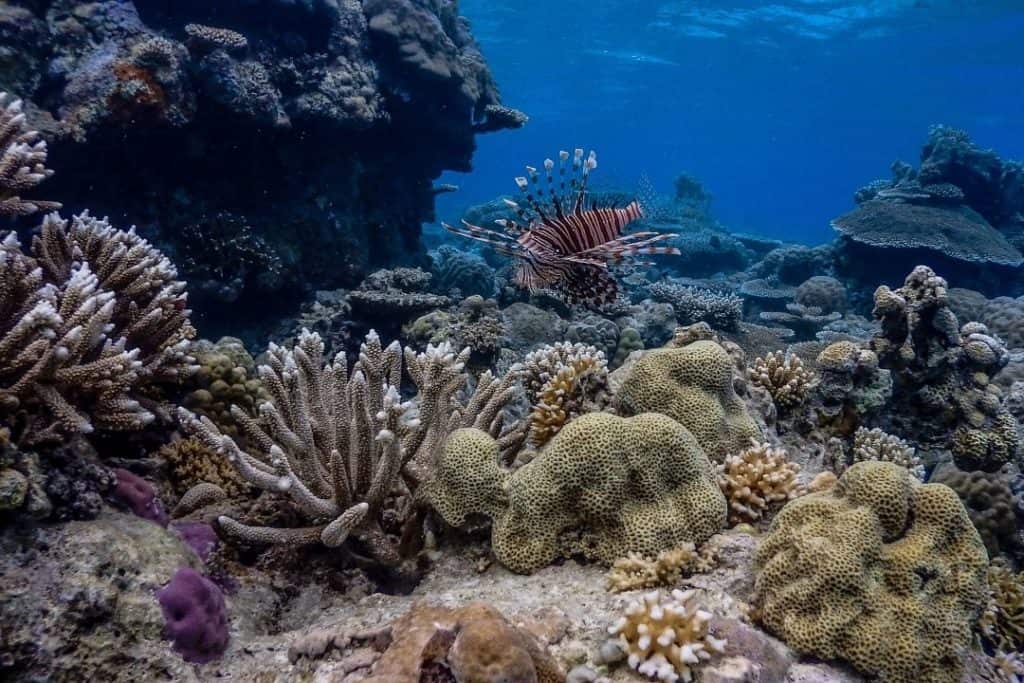
The Apo Reef is the world’s second-largest contiguous coral reef system and a National Park. The reef is about 22 nautical miles (40 kilometers) west of Sablayan, and is 16 miles (ca. 26 km) from North to South and 12 miles (ca. 19 km) from East to West.
It has 3 small islands each different in its makeup and all uninhabited. The apo reef natural park reef system is very healthy and has 20 outstanding dive sites that vary from shallow reefs to walls dives.
You will find sites for divers of all skill ranges with abundant marine life, hard and soft corals, pelagic fish… There are also some sea mounts rising from deeper water.
Being a National Park and so far offshore marine life is plentiful. This is a great place to scuba dive with sharks.
Apo reef has a long reputation for outstanding diving. However, it is not widely dived due to its remote location.
There are a few dive operators at Sablayan that offer day and overnight trips to the Apo Reef. The trip out takes a few hours.
Apo Reef in the Luzon has become a liveaboard destination, including Puerto Galera or Coron.
These additional locations have brought the dive industry an invigorated life.

As an example the luxury liveaboard Atlantis Azores sails year round with 5 different routes. Divers have a number of choice for diving a liveaboard in the Philippines and access to diving that is only possible by these boats.
Getting to Sablayan can be a little tiring. You can fly from the Manila Ninoy Aquino International Airport (MNL) to San Jose / Occ. Mindoro (SJI) in about an hour and then take a 2 and a half hour bus trip.
You could also take a bus/ferry/bus trip in about 8 hours. In the last few years, liveaboards have made the Apo Reef a destination.
One small warning when looking at dive, travel or accommodations information insure you do not confuse Apo island, Apo Reef Occidental Mindoro with Apo Island, Dumaguete, Negros Oriental another outstanding dive destination.
El Nido Palawan
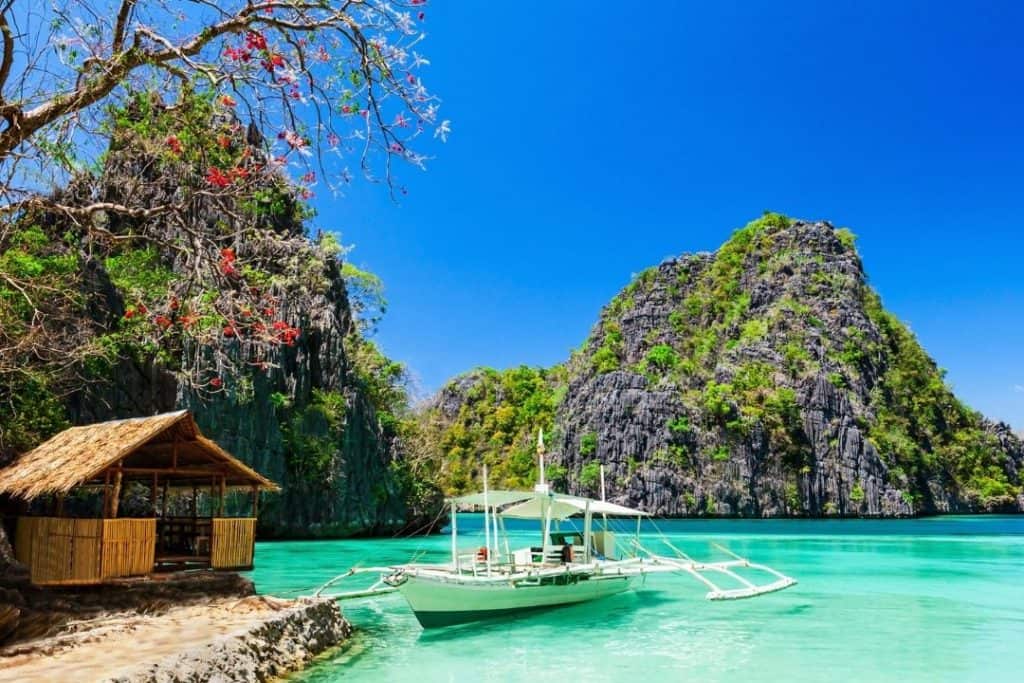
El Nido is located at the north western tip of Palawan island which was voted in 2017 as the best island in the world by Travel + Leisure, not the first time it made the top 5.
El Nido is a popular dive site with outstanding diving around the 45 islands and islets off its shores.
El Nido is famous for its 50 white sand beaches, limestone islands, seaside cliffs, lagoons, and amazing coral reefs.
In El Nido, Divers can experience seeing over 100 species of coral, 4 species of endangered sea turtles and over 800 species of fish.
Diving ranges from shallow reefs great for photography and beginners, to exciting deep drift dives along walls with green sea turtles.
The Runner ups
Just like a beauty pageant, not everyone gets a crown. That does not mean they are not outstanding on their own. Here are a few additional areas well worth considering.
- Puerto Princess Palawan. Puerto Princess is the largest city of the Province of Palawan, The coral reefs around the area are outstanding. It is often overlooked due to the diving at El Nido. Divers going to the Tubbataha Reefs National Marine Park in the Sulu Sea will depart from here and often do some dives to check their equipment.
- La Union is located in the north west portion of Luzon. Not frequent by international divers due to travel considerations.
- Romblon Island is at the east end of the Verde Island Passage, While the diving here is great, due to its remoteness it normally gets scientific oriented divers.
- Ilocos is located in the north west portion of Luzon. Not frequent by international divers due to travel considerations.
Traveling to Luzon
The gateway to the Philippines is Manila the capital which is located on the island of Luzon. The Ninoy Aquino International Airport (MNL) is the countries largest and busiest airport and is located within the metro area.
The domestic section of the airport connects to other major and many small airports throughout the country.
The airport has 51 airlines. Luzon has two additional major international airports. Clark airport (CRK) is located about 40 miles (ca. 64 km) north of Manila.
It has mostly short haul flights to neighboring countries but does have some flights to Europe and the Middle East. Clark airport services 17 airlines with connections to 21 domestic locations and 12 international destinations.
The international airport in Subic Bay is used for charter flights.
Manila is also the transportation hub for bus travel. You can travel by bus to any section of Luzon. However, traffic and few limited access roads can make for long trips.
Many parts of the country can be reached by buses that uses ferries to cross between islands.
Passenger ferries also connect Manila with major cities in the Visayas region.
Visayas
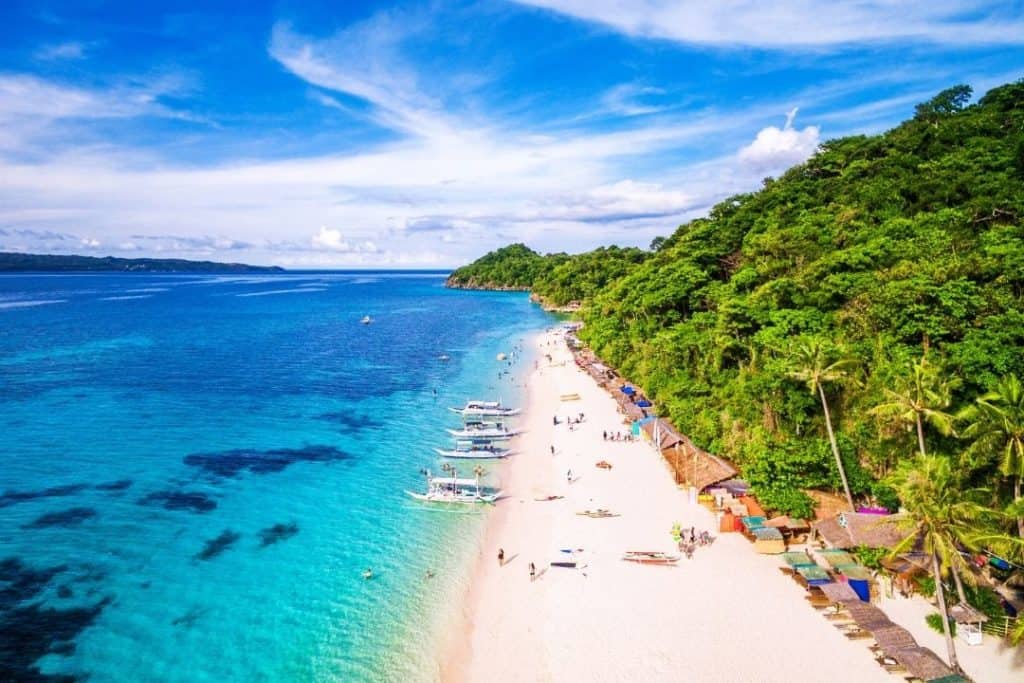
The Visayas is the center portion of the Philippines. This is one area that the Department of Tourism targeted heavily for the development of scuba diving.
They list 14 dive destinations in Visayas, however, a few of these such as Cebu are often consider multiple locations.
The name Cebu can be confusing as it is applied in a number of ways. Cebu Province is made up of Cebu Island and 167 surrounding islands and islets.
Cebu Island itself is long and narrow, stretching 122 miles (ca. 196 km) from north to south and 20 miles (ca. 32 km) across at its widest point. Cebu City is the capital of the province with a population of about a million people.
Metro Cebu consists of 7 cities and has a population of over 3 million.
Mactan Island, Metro Cebu
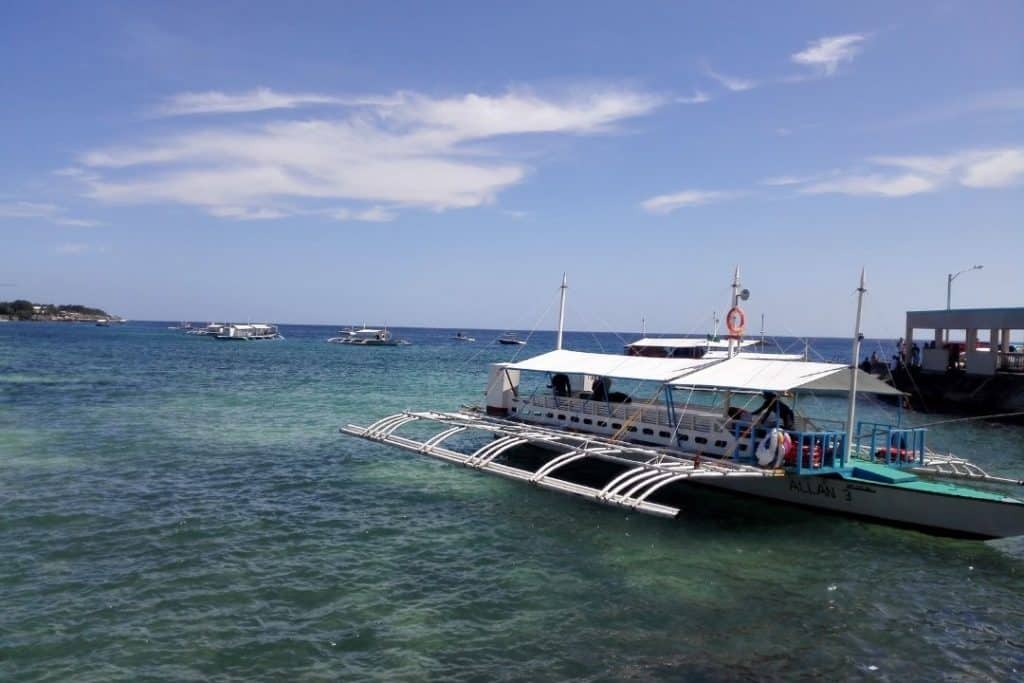
There are a number of dive operations within Metro Cebu however, the best diving is found in Mactan Island which is connected by bridges to Cebu City.
Mactan is also the site of the international airport.
Diving in Mactan is versatile, with something for just about every diver. Most of the diving and resorts are located on the east coast of the island facing the Hilutungan Strait.
There are also some on the southern tip of Mactan in the municipality of Córdoba and the Mactan Reef Flats. Magellan Bay on the north shore does have some scuba dive resorts as well.
Most of the dive centers and resorts have their own house reefs. These are shore dives that will have a gradual slope to 45 feet (ca. 14 m).
The reefs are health with excellent visibility and teeming with marine life. Beyond the house reefs you will find wall dives and the Hilutungan Strait on the east coast.
Dive safaris, long 3 tank dive trips, will also travel to the Olongo Island group and other Bohol locations.
Cave divers will also enjoy diving here as there are a number of caves suitable to various levels of cave and cavern divers.
If you are looking for a luxury dive vacation the Shangri-La Mactan is an excellent choice. It is also home of Scotty dive center who has locations around the Visayas.
Malapascua, Cebu

Can you say thresher sharks? Monad Shoal, located just off Malapascua Island is the only dive site in the world where thresher sharks appear daily.
The shoal is about 60 feet (ca. 18 m) deep surrounded by deep water.
On the shoal are a number of cleaning stations. In the early dawn, thresher sharks will emerge from the deep waters and approach a cleaning station.
Here, little fish will start feeding on parasites on the sharks skin and remove debris from the sharks teeth.
When the cleaning is complete, the shark will depart and another will soon replace it for your shark dive.
The local dive centers have a lottery system that assigns a cleaning station and time slot for each dive boat.
When a dive boat arrives, the divers are taken to an area where they will kneel and wait for the action.
This limits the impact of the reef as well as provides less disturbance to the cleaning station.
While the time closest to dawn is the busiest, the cleaning will continue for hours.
Manta rays and other large pelagics and the occasional reef shark are also known to visit the shoal’s cleaning stations later in the day.
Malapascua reputation as a best dive site to see sharks in the philippines was built on the thresher sharks, however, the sharks are not the only reason to dive here.
There are dozens of reef dive sites, some caverns and at least three wrecks. A great dive site is the lighthouse reef.
Dive it as a twilight dive and watch the mating ritual of the mandarinfish.
One of the must-do dives is Gato Island. Gato Island is a marine sanctuary and a sea snake sanctuary with a high biodiversity and biomass.
In addition to the marine life, is a 100 foot (ca. 30 m) tunnel that runs under the island. The 320 feet (ca. 98 m) long Dona Marilyn is about an hour and a half away and most dive centers will visit it once a week.
Malapascua island has some very nice beaches as well. Unlike many tourist destinations, this is mostly divers.
Moalboal Cebu

Moalboal is about 2 and a half hours southwest of Cebu City, and is located on the Tañon Strait. The Tañon Strait, between Cebu and Negros Islands, is around 100 miles (ca 160 km) long and varies from 3 to 17 miles (ca 5 to 27 km) wide.
This is a marine preserve five times larger than the famous Tubbataha Reefs National Marine Park.
The strait is over 1,700 feet (ca. 518 m) deep in places with a number of small islands and coral reefs with abundant marine life, huge schools of fish and coral gardens.
If you ask divers what is the best diving around Moalboal you will get dozens of answers. The marine park is home to many types of sharks including hammerhead sharks and rays.
There are 14 species of dolphins and whales in the strait. The marine park is home to spotted dolphins, spinner dolphins, dwarf sperm whales, and pygmy killer whales.
Pescador Island just offshore of Moalboal offers great photography opportunities, and a world-famous sardine run, fun dives. There is diving for everyone from novice scuba divers to advanced.
Bohol Province
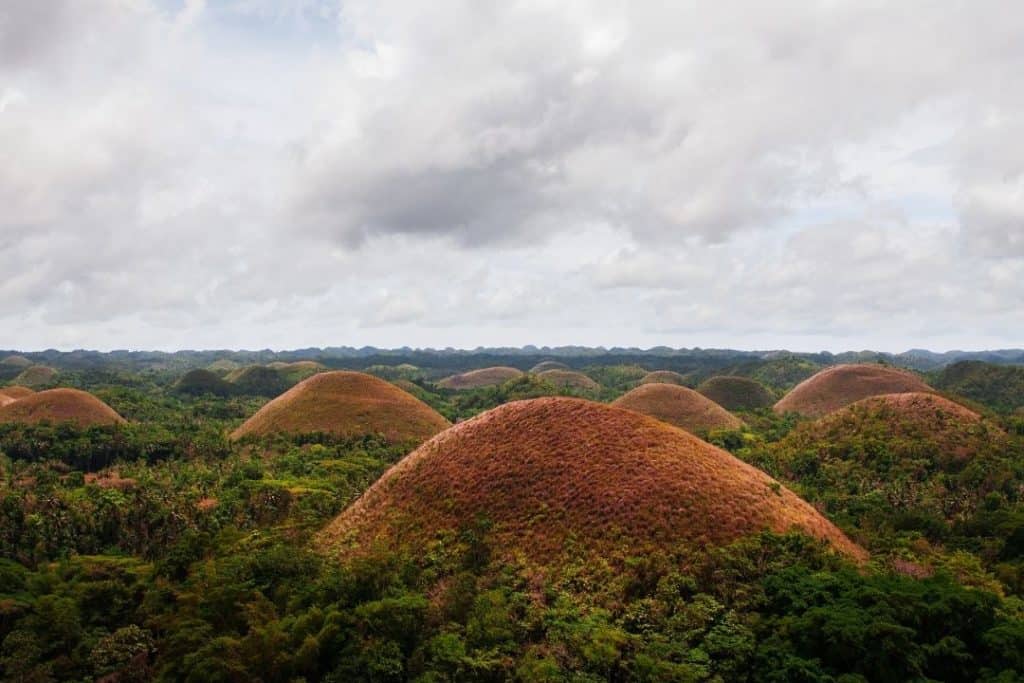
Bohol Province is another destination that could be listed as a few separate destinations. The province is made up of the main island Bohol and 75 smaller islands.
Bohol is easily reached from Cebu and some Bohol dive sites are dived by dive centers in Cebu.
Bohol chief tourist destination has long been the chocolate hills. A formation of over 1,200 hills that turn brown in the dry season and stand out over the green jungle below.
In recent years, diving has challenged the hills as the leading tourism feature.
Danajon Bank or Double Barrier Reef, is located just off the coast of Bohol.
This is one of only three double barrier reefs in the Indo-pacific and one of only six in the world.
The bank covers 105 square miles (271 square kilometers). The diving here is unforgettable and has dive sites for beginning divers as well as advanced divers and technical divers.

Balicasag Island is off the southern portion of Bohol and is well regarded as one of the best dive destinations in the Philippines for coral reefs and marine life.
Cabilao Island has a reputation for pelagic. Pamilacan Island is also a place for pelagic as well as whales and dolphins.
Panglao Island, also known as Alona Beach, is great for macrophotography.
Sogod Bay, Southern Lyte
While somewhat isolated, it not very difficult to make the trip to Sogo Bay. The diving sure makes the trip worth it.
There are 25 dive sites in the area, not counting the house reefs of some dive centers.
Rest assured, the house reefs are excellent. Wall dives are common many starting at 60 feet (ca. 18 m) and going beyond recreational limits.
You can even do challenging dive sites and wall dives from some resorts house reefs. Moving away from shore dives, there are a few small islands in the bay.
Many of these also have wall dives some suitable for drift diving. The best time to dive here is from November to May.
Not only is this the best weather it is also the time of the most plankton, and the best time for a chance to see a whale shark.
Plankton that draws whale sharks, hammerheads, dolphins, eagle rays and manta rays to Panaon Island and Sogod Bay.
Dumaguete, Negros Oriental
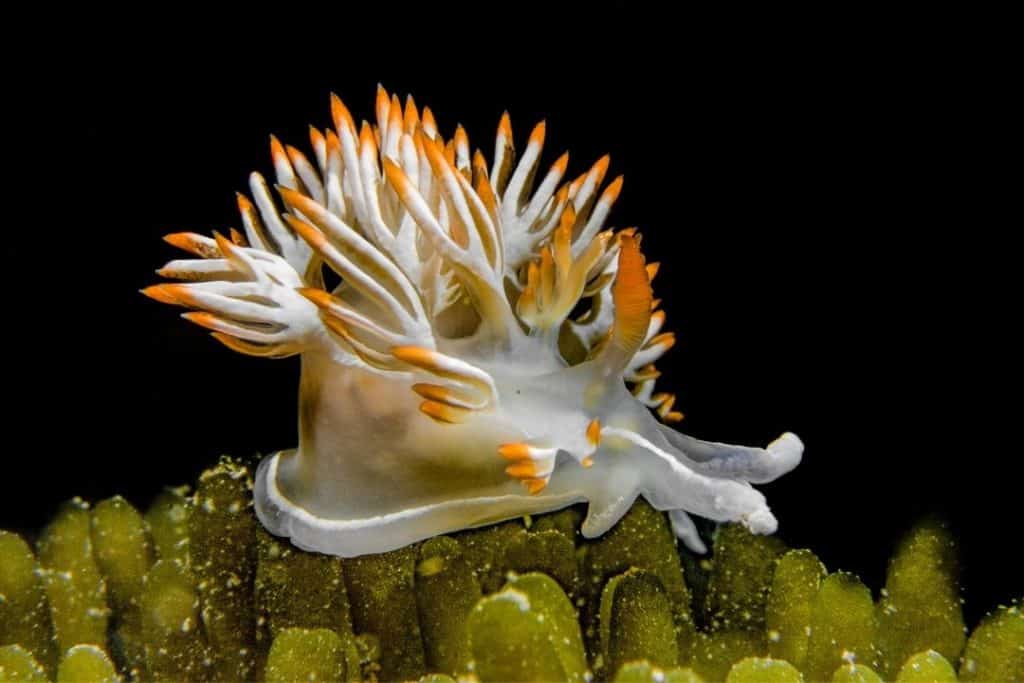
Dumaguete, the City of Gentle People, is the capital of the province of Negros Oriental and sits at the southern mouth of Tañon Strait.
Most of the dive centers are south of the center of the city. Here divers will find excellent reefs as well as muck diving for nudibranches, mantis shrimps and more.
The area is known for their critters. Apo Island, which has their own dive centers, also is well known for their high biodiversity and biomass.
Boracay
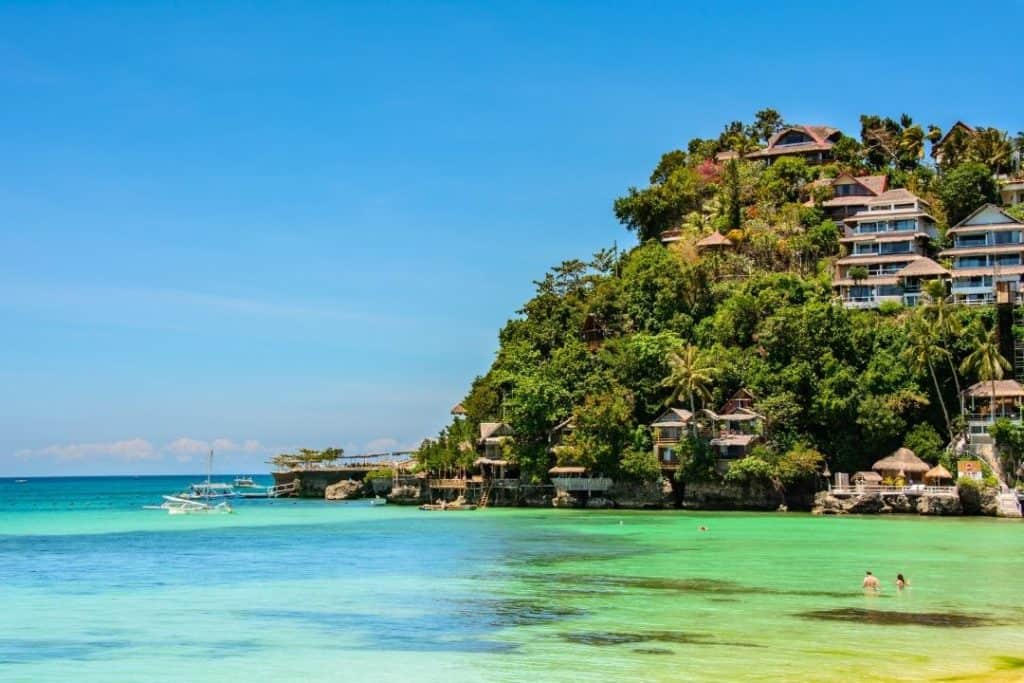
Panay Island is the fourth most populated and sixth largest island in the Pphilippines.
There are a number of outstanding dive destinations on the island.
However, Boracay island part of the town of Malay of Aklan province is the destination most well known.
Boracay is the leading tourist destination in the Philippines. It has been name the best island in the world a number of times from many sources.
Department of Tourism stats show that about 30% of international visitors spend some time on the island and it is the most desired destination for domestic tourism, but also one of the more popular diving destinations.
Know mostly as a beach and party destination, Boracay has some outstanding dive sites.
Travel to Visayas Philippines
Metro Cebu is the hub for travel to and in Visayas Philippines. Philippines’ second busiest airport is Mactan-Cebu International. International travelers can fly direct to Cebu on 17 different international carriers.
Domestic flights from 9 airlines will take you to the small airports in the region and to major destinations around the country.
Mindanao
Minadanao is the southern region of the Philippines. The Department of Tourism list four dive destinations for recreational diving in Minadanao.
They are Camiguin, Davao, General Santos and Sulu.
However, many countries have issued travel advisories for this region of the Philippines due to safety and political reasons.
The Tubbataha Reefs area of the Sulu sea and Davao are not included in the travel advisories.
Davao City
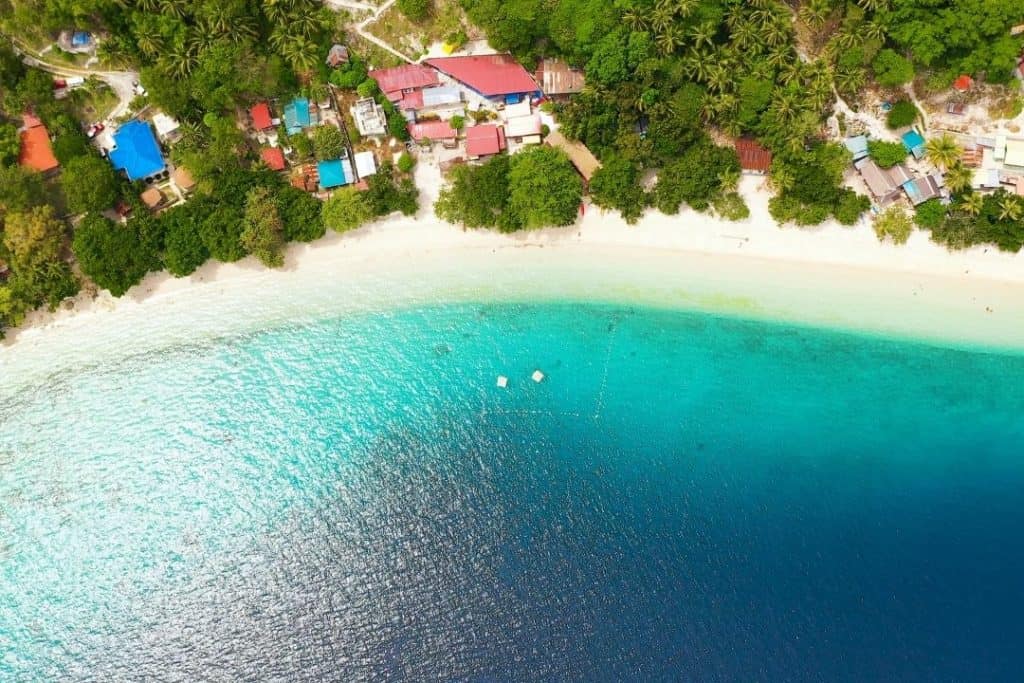
Davao City is not high on the list of dive destinations in the Philippines. However, If you find yourself in the city, think ahead and bring your dive gear.
Just a few minutes off the coast of Davao city are the islands of Samal and Talikud.
There are 25 dive sites around these two islands. One of the popular activites is island hopping. These are 8-hour boat trips that head out of Davao city to the nearby islands.
The boats make three stops where the passengers can swim or snorkel, including at least one at a beach.
You can buy food and drinks onboard, get them at the beach stop or pack your own. The boats also offer a very reasonably price discover dive for new scuba divers.
Certified divers with their own dive buddy and equipment, can book the island hopping trip and rent 3 tanks for a full day of diving for around $20.
Tubbataha Reefs Natural Park (TRNP)
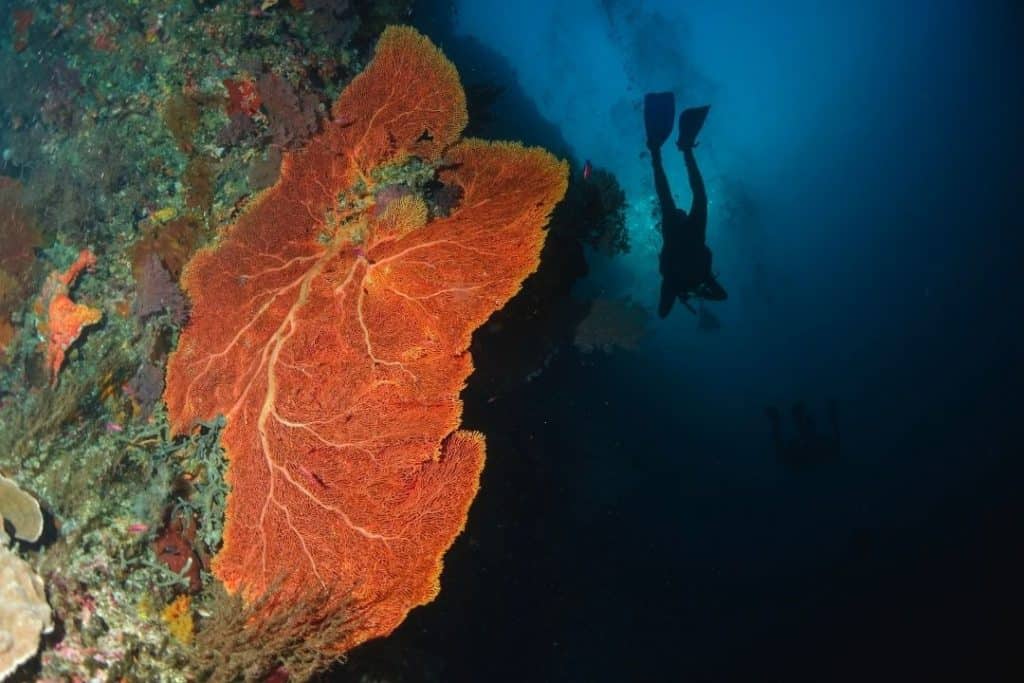
Tubbataha Reefs is a UNESCO World Heritage Site located in the Sulu Sea about 95 miles (ca. 153 km) southeast of Puerto Princesa City.
The UNESCO citation gives a great summary of the reef system.
“It protects an area of almost 100,000 hectares of high quality marine habitats containing three atolls and a large area of deep sea. The property is home to a great diversity of marine life and reef fish. Whales, dolphins, reef sharks, green sea turtles, sea snakes and Napoleon wrasse are amongst the key species found here. The reef ecosystems support over 360 species of coral and almost 700 species of fish. The reserve also protects one of the few remaining colonies of breeding seabirds in the region.”
Tubbataha Reefs Natural Park is divided into three main areas, North Atoll, South Atoll, and Jessy Beazley Reef.
There are dive sites around each of the three areas that are moored to prevent damage to the reefs in this world heritage site.
Diving is by permit only with only about 15 liveaboards allowed each year.
The park is over 350 square miles (9o6 Square Km) in size, so you will not likely see anyone while you are there.
Getting to the reef takes at least 10 hours, and the dive season last about 3 months from mid March to mid June.
The trip is worth it, this is one of the best dive sites in the philippines, and in Asia.
Traveling to Minadanao
Francisco Bangoy International Airport also known as the Davao International airport (DVO) services 13 domestic destinations and a limited number of international destinations.
The majority of the flights to and from the airport are to Manila and Cebu.
What Is Your Favorite Philippine Dive Destination?
We looked at best 16 dive spots in the Philippine, at least from my view. How about your view?
Do you have your own comments for this list of philippines diving spots? Or, maybe you have another destination you love? Feel free to post your comments.

